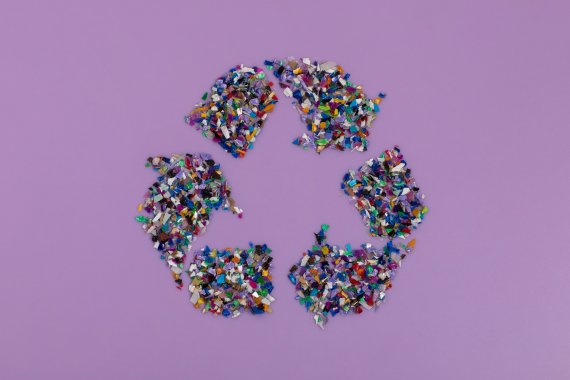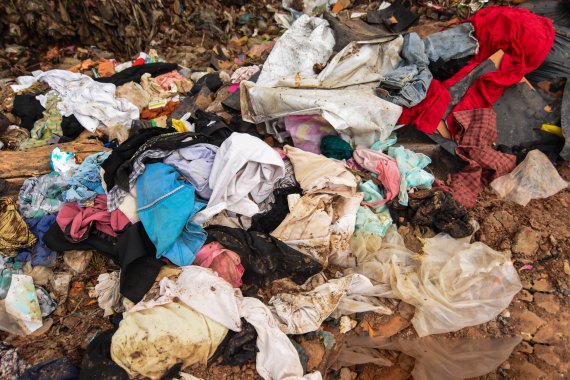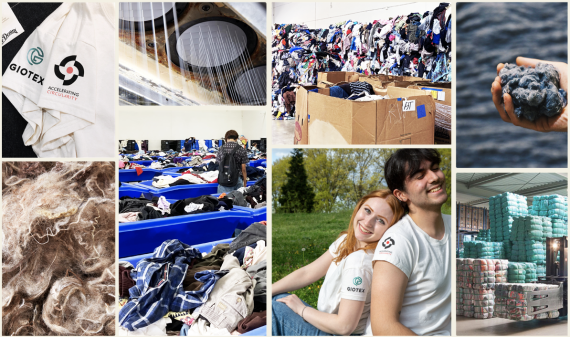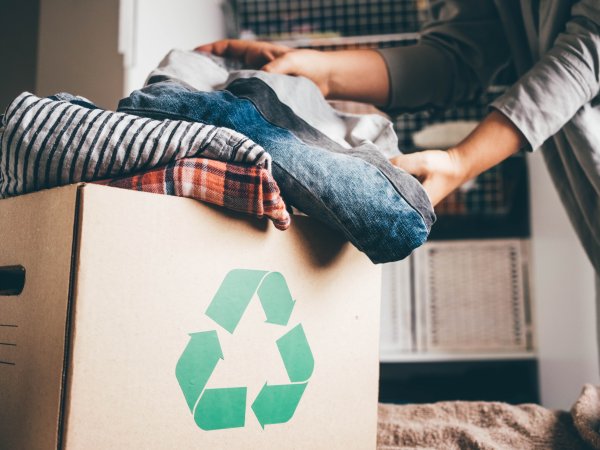Louisa Smith is a globally recognized textile and fashion expert. Her innovative spirit as well as her expertise make her a sought-after opinion leader in the textile industry - also in the sports and outdoor sector. At the Textrends Awards and presents them once a year at ISPO Munich. Louisa Smith will also be supporting the ISPO Award team with a sustainability check and examining the sustainability claims of relevant products - for more transparency and real change in the world of sports. For ISPO.com, she looks at innovations and trends in the industry in her column Tex-Bites.
At present, many brands are relying on take-back services. The used clothing is usually picked up by partner companies, sorted, resold - or ends up in the rubbish or in the incinerator. This is because a large proportion of the clothing that is currently intended for reuse through take-back systems is not suitable for the second-hand market.
Recycle, reuse, resell, repair - we already know all that. But what about a completely new life? Completely transforming a product at the end of its life cycle into a raw material for a new substance? It's possible! The principle is called Textile-to-Textile (T2T). This would close the cycle of a garment - perhaps the start of the circular economy becoming mainstream.

Award-winning circular innovation companies Spinnova and Renewcell are taking a first step in this direction. They have announced their collaboration on the launch of a technology concept to scale the production of next-generation textile fibres from textile waste. The new fibre production concept combines patented technologies from both companies and takes the circular economy in the fashion and textile industry a step further.
Pioneering a circular economy in the fashion industry, Renewcell recycles cellulose-rich textile waste such as cotton and viscose using a patented process that transforms textile waste into a pulp product called Circulose. This biodegradable raw material is made from 100% recycled textiles and can be used to make new fibres.
"The textile industry is in the midst of a massive shift from a linear business model to a circular economy. The change requires new partnerships and bold, innovative actors*. It was really exciting to learn more about Spinnova's technology. We can't wait to launch the first Circulose collection made with Spinnova's unique fibre spinning technology," says Patrik Lundström, CEO of Renewcell.
Until now, circulose has been used to produce man-made cellulose fibres, such as viscose. With Spinnova's transformative technology, the partners can convert Circulose into a new, bio-based textile fibre that does not require harmful chemicals in the fibre spinning process. This is a remarkable step toward solving the industry's growing textile waste problem, while setting new standards for sustainable textile fibre production.
Spinnova has already made several successful attempts to spin the Circulose pulp into new textile fibres. The first batches of Spinnova fibers made from 100% Circulose have been used to develop yarns and fabrics, and the first prototypes are made from a blend of cotton and Circulose.
The trend toward man-made cellulose fibres in sports is definitely one to keep an eye on.

"The fashion and textile industry needs new solutions and collaboration across the supply chain, which is what makes this partnership so exciting for us. Our goal is to accelerate the fashion industry's transition to a circular economy and explore ways to scale production from textiles to textile fibres", says Ben Selby, deputy CEO of Spinnova. He reports that initial tests combining Renewcell's material and Spinnova's technology have been very promising.
The companies are currently exploring with potential partners ways to scale textile-to-textile fibre production and expect to begin developing the first commercial collection of Circulose fibres soon. Consumers are expected to be able to buy the first products by the end of 2024.
Other brands are also making inroads. The Walmart Foundation has committed $1.2 million to support Goodwill Industries International Inc. and Accelerating Circularity.
Goodwill is a U.S. non-profit that sells donated clothing to support local projects. Because it is a charity, the amount and variety of clothing dropped off is unique compared to other retailers. Viscose, cotton, synthetic fibres, blends - they can all be given a new life with Accelerating Circularity.
Skills, systems and infrastructure will be built at participating Goodwill organizations to turn unsaleable textile donations into recycled materials. This transformation is critical to the circular economy in textiles.
"Goodwill is focused on developing solutions for textiles that are scalable, circular and traceable. We see textile-to-textile recycling as an important pathway for clothing donations that are no longer useful and have reached their end of life," says Brittany Dickinson, director of sustainability at Goodwill Industries International.

Accelerating Circularity's (ACP) mission is to develop new supply chains and business models to turn end-of-life textiles into common raw materials. ACP is a non-profit organization focused on textile-to-textile recycling at commercial scale. To do this, the action-oriented NGO relies on a collaborative approach led by its various stakeholders.
They have the expertise, but in the end it's brands and retailers that need to take charge. That will be done through collaboration, which will also be funded by a grant from the retail sector.
"We want to advance our mission by helping Goodwill turn textiles destined for recycling into higher-value recycled raw materials. We sort to specifications, remove trims and other interfering materials, and collect sufficient quantities to support full commercialization of textile-to-textile systems," says Karla Magruder, president and founder of Accelerating Circularity.
- ISPO awards
- Mountain sports
- Bike
- Design
- Retail
- Fitness
- Health
- ISPO Job Market
- ISPO Munich
- ISPO Shanghai
- Running
- Brands
- Sustainability
- Olympia
- OutDoor
- Promotion
- Sports Business
- ISPO Textrends
- Triathlon
- Water sports
- Winter sports
- eSports
- SportsTech
- OutDoor by ISPO
- Heroes
- Transformation
- Sport Fashion
- Urban Culture
- Challenges of a CEO
- Trade fairs
- Sports
- Find the Balance
- Product reviews
- Newsletter Exclusive Area
- Magazine







